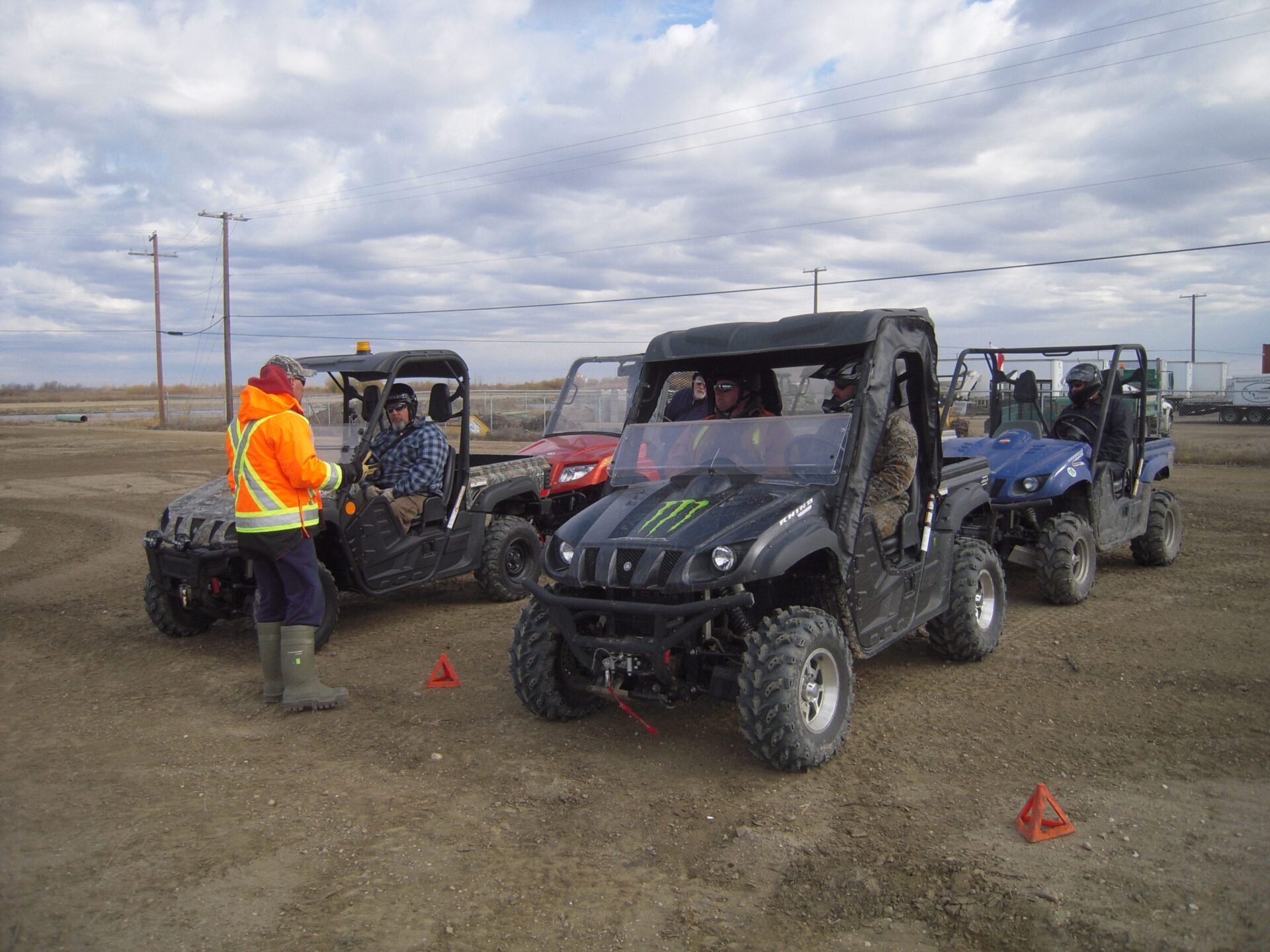ATV and UTV Safety Training

ATV and UTV Safety Training: How Employers Can Support Their Employees in Canada
All-terrain vehicles (ATVs) and utility task vehicles (UTVs) play crucial roles in various industries across Canada, from agriculture and forestry to mining and recreational activities. However, operating these vehicles comes with inherent risks, and ensuring the safety of employees who use ATVs and UTVs is paramount for employers. In this article, we will explore how employers can support their employees in safely operating ATVs and UTVs in Canada, emphasizing the importance of training, equipment, maintenance, and adherence to safety protocols.
- Comprehensive Training Programs:
- Employers should provide comprehensive training programs to employees who operate ATVs and UTVs. Training should cover:
- Vehicle operation: Proper techniques for starting, accelerating, braking, turning, and navigating various terrains.
- Safety precautions: Understanding and adhering to safety guidelines, such as wearing personal protective equipment (PPE), fastening seatbelts, and avoiding risky maneuvers.
- Hazard recognition: Identifying potential hazards, such as uneven terrain, obstacles, and environmental conditions (e.g., mud, snow, ice), and implementing strategies to mitigate risks.
- Emergency procedures: Responding to emergencies, such as vehicle rollovers, mechanical failures, or injuries, and communicating effectively with emergency responders.
- Employers should provide comprehensive training programs to employees who operate ATVs and UTVs. Training should cover:
- Providing Adequate Equipment:
- Employers should ensure that employees have access to properly maintained ATVs and UTVs equipped with essential safety features. This includes:
- Roll-over protection structures (ROPS) and occupant protective systems (OPS) for UTVs to minimize the risk of injuries in the event of rollovers.
- Safety restraints, such as seatbelts or harnesses, to secure occupants and prevent ejections during sudden stops or collisions.
- Lighting and visibility enhancements, such as headlights, taillights, and reflective decals, to improve visibility, especially in low-light conditions.
- Employers should ensure that employees have access to properly maintained ATVs and UTVs equipped with essential safety features. This includes:
- Implementing Maintenance Protocols:
- Regular maintenance and inspection of ATVs and UTVs are essential for ensuring safe operation and preventing mechanical failures. Employers should establish maintenance protocols, including:
- Scheduled inspections: Conducting routine inspections of vehicles to check for signs of wear and tear, loose components, or fluid leaks.
- Preventive maintenance: Performing regular servicing, lubrication, and adjustments to ensure that vehicles are in optimal working condition.
- Prompt repairs: Addressing any identified issues or deficiencies promptly to prevent them from escalating into safety hazards.
- Regular maintenance and inspection of ATVs and UTVs are essential for ensuring safe operation and preventing mechanical failures. Employers should establish maintenance protocols, including:
- Enforcing Safety Protocols:
- Employers should establish and enforce strict safety protocols for ATV and UTV operation in the workplace. This includes:
- Setting speed limits and operational guidelines for different work environments, such as construction sites, agricultural fields, or industrial facilities.
- Designating authorized operators who have received proper training and certification to operate ATVs and UTVs.
- Prohibiting reckless behaviors, such as speeding, performing stunts, or carrying passengers beyond the vehicle’s capacity.
- Implementing a zero-tolerance policy for drug or alcohol impairment while operating ATVs and UTVs.
- Employers should establish and enforce strict safety protocols for ATV and UTV operation in the workplace. This includes:
- Providing Ongoing Supervision and Support:
- Employers should provide ongoing supervision, guidance, and support to employees who operate ATVs and UTVs. This includes:
- Assigning experienced supervisors or designated safety officers to oversee ATV and UTV operations and provide feedback and guidance to operators.
- Encouraging open communication between employees and management to report safety concerns, near misses, or incidents promptly.
- Conducting regular safety meetings or toolbox talks to reinforce safety messages, discuss lessons learned from incidents, and review best practices for ATV and UTV operation.
- Employers should provide ongoing supervision, guidance, and support to employees who operate ATVs and UTVs. This includes:
In conclusion, employers in Canada have a responsibility to ensure the safety of employees who operate ATVs and UTVs in the workplace. By providing comprehensive training programs, adequate equipment, maintenance protocols, and enforcement of safety protocols, employers can mitigate risks and create a safer work environment for ATV and UTV operations. Additionally, ongoing supervision, support, and communication are essential for reinforcing safety messages and promoting a culture of safety among employees. By prioritizing ATV and UTV safety, employers demonstrate their commitment to protecting the well-being of their workforce and minimizing the risk of accidents and injuries in the workplace.
Categories
- Aerial Lift
- ATV Training
- Bear Awareness
- Chainsaw Training
- Confined Space
- Defensive Driving
- Forklift Training
- Lockout Tagout
- Online Safety Training
- Overhead Crane
- Pipeline Construction Safety Training
- Propane Handling
- Safety Training Benefits
- Scissor Lift
- Skid Steer Training
- Space Awareness
- TDG
- Telehandler Forklift
- Traffic Control
- Train the Trainer course
- Training Course
- Uncategorized
- WHMIS
- Workplace Harassment and Violence Preventiont
